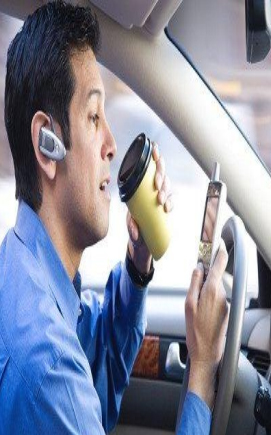
The purpose of this paper is to provide a comprehensive picture of the impact of driver distraction to road safety. Both internal and external distraction factors are considered, whereas particular focus is put on mobile phone use (internal) and advertising signs (external) related distraction. An exhaustive review of the literature on driver distraction definitions, impacts and accident mechanisms, as well as distraction factors was carried out, concerning both in-vehicle and external factors, as well as road, traffic and individual factors. In-vehicle distraction factors include mobile phone use, navigation / entertainment systems, conversation with passengers, eating or drinking, smoking etc. External distraction factors include advertising signs and labels, traffic signs, landscape, destination or address search, other vehicles, pedestrians or incidents etc. Driver distraction may have an impact to driver attention (hands-off the wheel, eyes-off the road), driver behaviour (vehicle speed, headway, lateral position, driver reaction time) and driver accident risk. As regards the mechanism of distracted driving accident risk, the decrease in speed and the increase in the distance from the central axis, that are observed during distracted driving, might be considered beneficial for road safety. However, they cannot always counter-balance the increased reaction times, which eventually lead to increased accident probability, especially at unexpected incidents. Research results suggest that mobile phone use may be the most important in-vehicle distraction source for drivers. Drivers using their mobile phone while driving present up to 4 times higher accident risk. Measures against driver distraction may include enforcement of traffic rules, driver awareness campaigns, and driver training and education, especially for high-risk groups (e.g. novice drivers, frequent offenders etc.). Technology improvements towards more ergonomic design of in-vehicle devices are rapidly progressing; however the
related safety effects are to be validated.
| ID | pc151 |
| Presentation | |
| Full Text | |
| Tags | driver behaviour, driver distraction |






